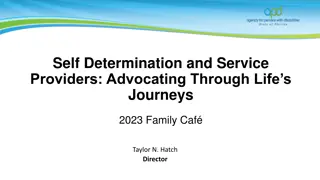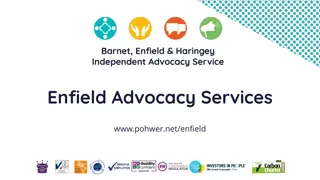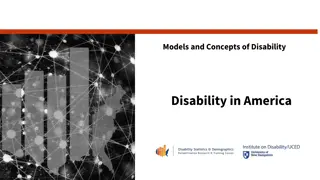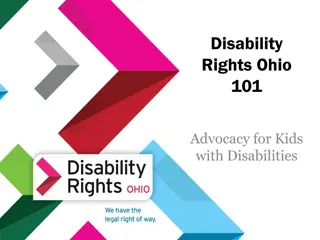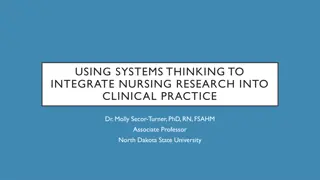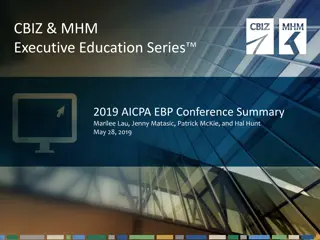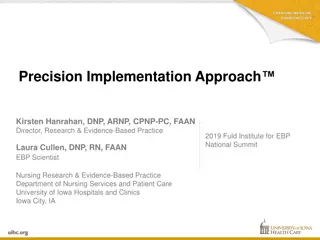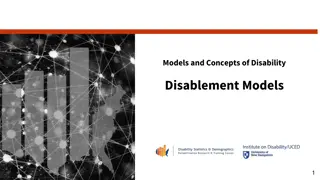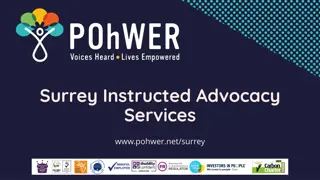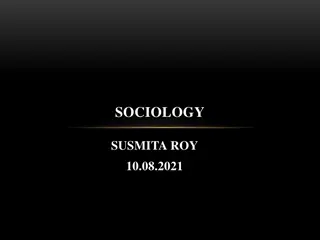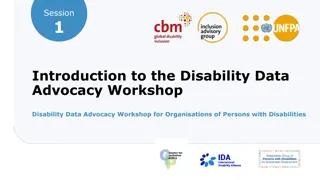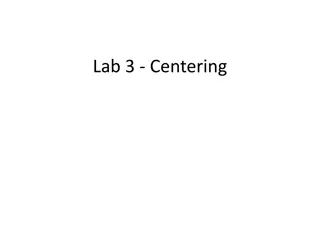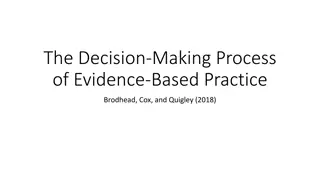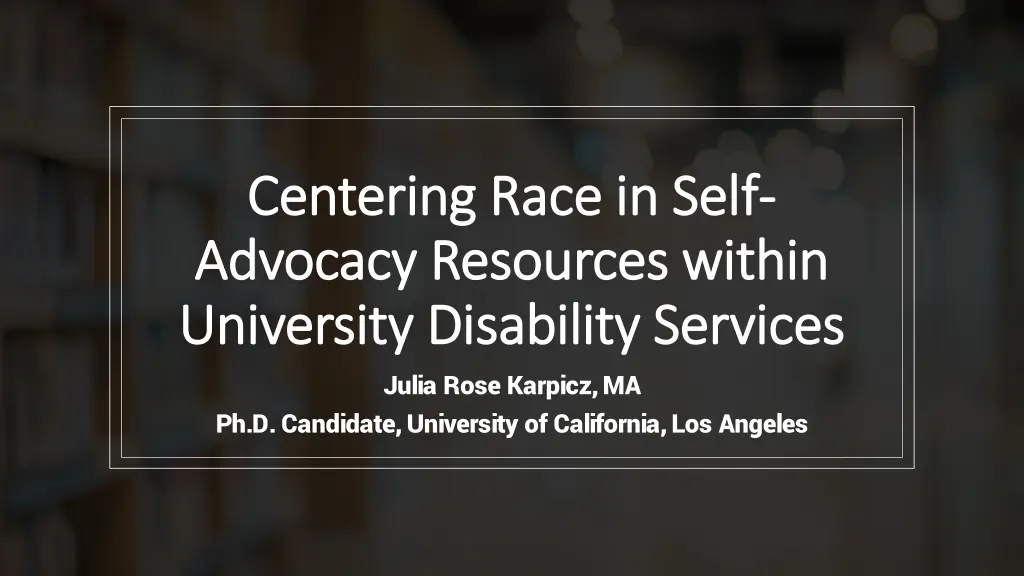
Centering Race in Self-Advocacy within University Disability Services
Explore the importance of centering race in self-advocacy efforts within university disability services through practitioner narratives and a conceptual framework. Discover how disabled graduate students of color define self-advocacy and the intersection of race, identity, and disability in obtaining accommodations and combating access barriers.
Uploaded on | 0 Views
Download Presentation

Please find below an Image/Link to download the presentation.
The content on the website is provided AS IS for your information and personal use only. It may not be sold, licensed, or shared on other websites without obtaining consent from the author. If you encounter any issues during the download, it is possible that the publisher has removed the file from their server.
You are allowed to download the files provided on this website for personal or commercial use, subject to the condition that they are used lawfully. All files are the property of their respective owners.
The content on the website is provided AS IS for your information and personal use only. It may not be sold, licensed, or shared on other websites without obtaining consent from the author.
E N D
Presentation Transcript
Centering Race in Self Centering Race in Self- - Advocacy Resources within Advocacy Resources within University Disability Services University Disability Services Julia Rose Karpicz, MA Ph.D. Candidate, University of California, Los Angeles
Practitioner Narratives about Self-Advocacy As a disability services practitioner, I was familiar with self-advocacy as a critical practice for disabled students (Daly-Cano et al., 2015; Roberts et al., 2016; Test et al., 2005). However, I began noticing how disabled students of color were being racialized by faculty and staff in response to their self-advocacy efforts. I struggled to find resources on how identity, power, and environment shaped self- advocacy. Instead, I often found deficit narratives about disabled students: Self-advocacy skills are essential for students with disabilities in higher education to possess. But for many, it can be a struggle suggest[ing] there s a deficiency in self-advocacy skills at higher ed institutions Garbutt, 2019 I designed this study to answer the research question: How do disabled graduate students of color define self-advocacy?
Conceptual Framework Test et al. (2005) synthesized decades of research on self- advocacy into a framework Highlights knowledge of self, knowledge of rights, communication, and leadership as key components I used this framework as part of an artefact elicitation exercise in student interviews
Name Disability Race Grad. Institution Maria Blind, ADHD, Chronic Health Latinx Private, East Coast Ariel LD, Mental Health, Chronic Health Latinx Public, West Coast Gene Blind Black Public, Southern Participants Paula Chronic Health Latinx Public, West Coast Sam LD Black, mixed Private, East Coast Naomi Mental Health, Chronic Health Mixed race Private, West Coast Evette Blind, Mental Health Black Public, Midwest; Private, East Coast
Race should be at the center Knowledge of Self Race / Identity Knowledge of Rights Knowledge of Environment Communication Leadership
...think about what else is important to you, intersecting identities, how do your identities affect disability or the way you obtain accommodations or combat access barriers or do your daily life routine Race and Identity
Knowledge of Environment There s all these resources and services that you might need and you might be aware of them [or not], so you kind of have to do a lot of research, you have to dig The knowledge is not going to be there unless you investigate it, no one gave that knowledge to me Knowledge of Environment
Centering Race in Self-Advocacy Resources Centralize information about resources on-campus Collaborate on resources and outreach with other identity-centered offices on-campus Open the door in the interactive process to dialogue around salient social identities Be mindful around deficit-framing Discuss self-advocacy and intersectionality in faculty and staff trainings


